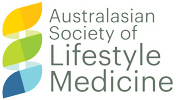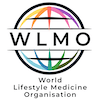
Reflecting on the Lifestyle Medicine Movement and the Road Ahead
by ASLM President Dr Hung The Nguyen
There must be a word or phrase in all our human languages that describes – walking through a crisis and continuing to do what we’ve always done and not effectively addressing the fundamental causes of the crisis. Alternately there must be word or phrase for – rising to the challenge of a crisis armed with all that we know and can do. Maybe that phrase is simply “Lifestyle Medicine movement”.
I was in the central Australia, Arrernte country, walking pass Emily Gap to a jump-up along the Yeperenye track. It is well known that exposure to green and blue environments can benefit physical and mental health, subjective wellbeing and cognitive function. What is less well known is that the brown or red (desert) environments can have similar effects. I thought this would be a great place to reflect on the activities of ASLM and the state of lifestyle related diseases in Australasia for the purpose of presenting the annual ASLM Update at the British Society of Lifestyle Medicine 2024 Conference.
The state of lifestyle related diseases is not great with 1 in 2 Australians having a chronic illness, 2 in 5 Australians will have a mental illness in their lifetime and that 40% of our young people 16-25 yo are suffering psychological distress. There has been a significant increase in 14 types of cancer in the under 50’s in the last 3 decades e.g. there has been a doubling of colon cancer in the 20-39 yo. Diabetes in Australia has reached a crisis point, so much so that the Commonwealth commissioned an enquiry in the diabetes to which ASLM responded with our submission.
I shared some good news. Australia has introduced world leading vaping legislation to reduce the number of people vaping by disrupting the supply of highly addictive vapes. In NZ an Integrated Primary Mental Health and Addictive Services was rolled out. NZ general practice clinics will have 3 new roles integrated into their practice – health improvement practitioners (mental health worker, health coach and support worker. The initiative acknowledges the social determinants of health and wellbeing; that 80% of health consultations are made up of social issues. These integrated roles allow GPs to talk about what matters to their patients and allow them to refer, almost immediately within the practice, patients for mental health and social care.
As the sun sets on Yeperenye to the west, I reflected on ASLM activities in the last 12 months. Just weeks ago, we delivered a very successful conference with our collaborator the Australian Primary Health Care Nurses Association. ASLM participants were able to participate in the Festival of Nursing, LM2024 and the inaugural Primary Health Care Congress. With the same level of quality programming, ASLM was able to reach new audiences, share our vision of the LM movement and market our membership offerings and education opportunities.
Education and community of practice highlights in 2024 included the introduction of ASLM Accreditation in Lifestyle Medicine (AALM). After much work from our ASLM team, the AALM is a success and is the localised accredited LM program our members were looking for. Interest remains high, especially for GPs looking for impactful and relevant education to satisfy their CPD requirements. Local members gatherings were another innovation for 2024 to build local communities of practice in Melbourne, Perth, Sydney and Auckland. The strength of these groups depends on you, our members and your vision of how you may support and learn from each other in your local area.
Communities of practice in LM is not restricted to health professionals but there is a growing movement in the undergraduate student space. We have been working closely with university student LM Interest groups. A good example comes from Monash University. They want to have a program that complement their medical curriculum; they want to influence their health curriculum; promote lifestyle behavioural changes in the student body; and they wanted to support student bodies from other Australian and NZ universities. ASLM was invited to participate in a live stream event for Medical School students in Australasia this year to encourage students to start their own LM Interest Groups.
There was more to my presentation to our international friends; but I can share one more thing and that is my subjective wellbeing in the red space was given a boost that evening. The previous night, our partners and collaborators in the Northern Territory who were introducing Shared Medical Appointments into their clinical and community practices were recognised at the annual NT PHN Health Professionals of the Year Awards. It was a proud moment indeed for the AMSANT, Miwatj, Danila Dilba and Central Australian Aboriginal Congress and ASLM. This news certainly went into my ASLM Update to BSLM24 as it signifies ASLM relentless work to change the way healthcare is delivered to address lifestyle related diseases.
There is much more work to do if we are to beat the crisis in our current health status. There is a strong and passionate membership at ASLM who volunteer their time and expertise, who step up and who step forward when called upon. And we need more such members if we are to achieve our mission. I call upon our membership to renew your membership when due, to promote ASLM and the lifestyle movement to your peers and networks, to volunteer and join in ASLM education offerings and events and attend our local in person meetings.
This article was prepared by ASLM President Dr Hung The Nguyen.



